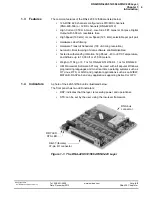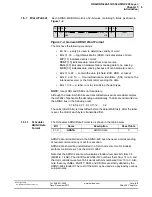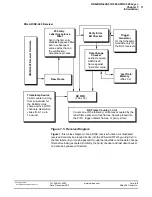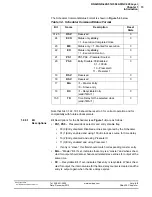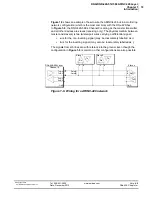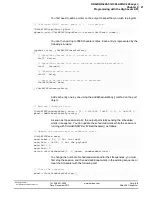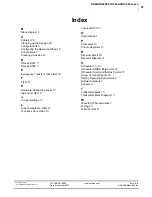
DNA/DNR-429-512/566 ARINC 429 Layer
Chapter 1
16
Introduction
Tel: 508-921-4600
www.ueidaq.com
Vers:
4.5
Date: December 2013
DNx-429-Chap1x.fm
© Copyright 2013
United Electronic Industries, Inc.
•
TD
— 16-bit time delay. Used to set time intervals for output of master entries
(slave entries follow master entries in the schedule). This field is used as a
maximum value for the counter, which increments its value each time the
100uS clock or corresponding prescaler produces output. The actual clock
source is selected by the PS field.
NOTE:
Another powerful feature of the DNx-429-566/512 layer is the ability to
generate a “cross-trigger” of the scheduled entry when a selected label
with the same index is accepted by Receiver 0 of the same ARINC
block. This feature, which may be user-enabled, works only for enabled
master entries and may be turned on/off by a dedicated bit in the label
filter. When a cross-trigger is detected, the corresponding entry is used
to set entries in the Scheduler that may be triggered by the receiver, as
clocked by prescaler 0 or 1, but which keep that prescaler disabled. In
such cases, only “cross-triggers” can set an entry for output.
Descriptions of the Status-only bits are as follows:
•
ECO
— “Execution Complete at Least Once”. If set, this bit indicates that the
entry was output by the ARINC transmitter at least once. This is a sticky bit
that can be cleared only by writing a command to the Scheduler. This com-
mand may change or may stay the same.
NOTE:
Writing to the Scheduler command area clears some internal status bits.
It is recommended that you fill all 256 entries with initial information and
that you write 0x0 in all unused entries. The DNA-429-566/512
Scheduler command and data areas are accessible regardless of the
status of the LIOE (1<<31) bit in LCR and may be accessed at any time.
•
ME
— “Marked for Execution”. This bit is set by the time scheduler for the
entry marked for execution (pending transmission) and is cleared for exe-
cuted (transmitted) entries.
•
EO
— “Execution Overrun”. This bit indicates that a recyclable entry was
scheduled for execution while the ME bit was still set. If the EO bit is set, it is
likely that data is scheduled in such a way that the ARINC bus does not have
enough capacity to transfer it or that too much of the unscheduled data is
pumped through the transmit FIFO. This bit is a sticky bit that may be cleared
only by writing a command to the Scheduler. The command may change or
be the same. The EO bit also triggers an “execution overrun” interrupt for the
given transmitter.



